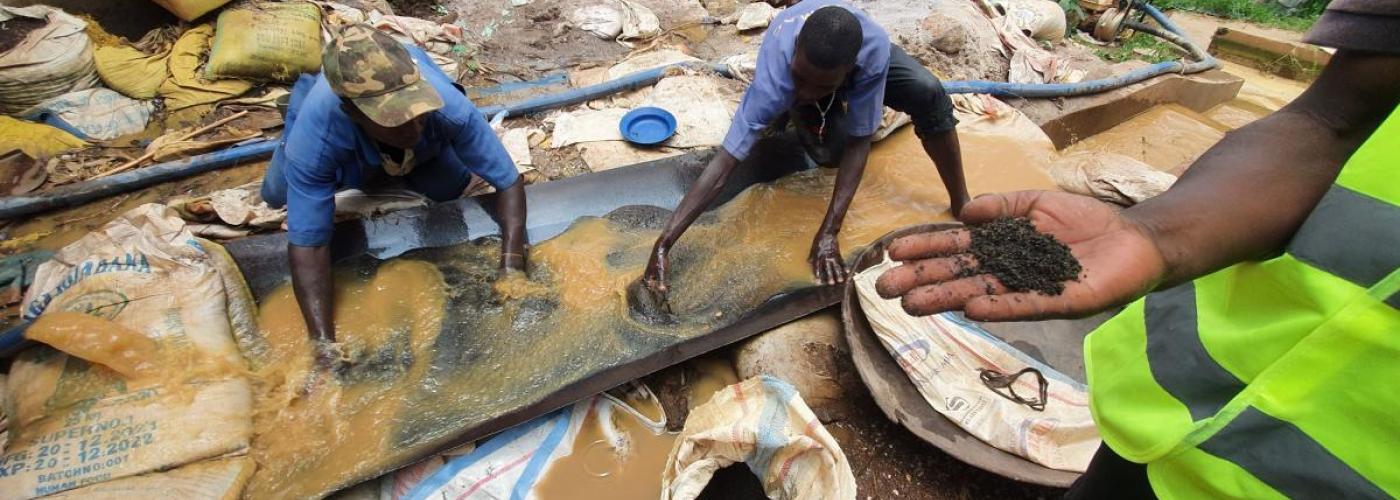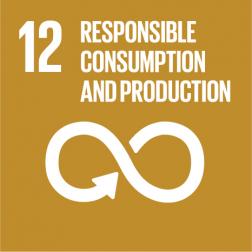Mining activity that is anything but sustainable
Unfortunately, that wealth of natural resources is giving rise to bloody conflicts, in eastern Congo in particular. What is more, too little of the profits flow back to the Congo itself. In addition to larger mining companies that are still making some attempts to carry out their mining operations in a more sustainable manner, there are also countless – self-employed – artisanal miners. In the majority of cases, they extract the minerals in a careless way, as a result of which the water, soil and air in the wider area have become heavily polluted.
Sometimes, as in the extraction of gold, toxic products such as mercury and arsenic are used. But all of the digging, cutting and pulverising involved can generate so much (fine) dust that entire areas are affected, leading to serious health consequences for local residents.
Artisanal miners in the area live and work in deplorable conditions and they depend entirely on the ores that they find, even to buy food. After all, they have given up farming; they no longer farm their plot of land.
18 scholarships for geology students
The AfricaMuseum in Tervuren – which first and foremost is actually a respectable research institution – is gradually trying to develop a more sustainable form of mining. With funds from the Belgian Development Cooperation, it grants scholarships to students from the region following either a master's degree, a doctorate, or a post-doctorate programme in Geology.
Students can use the scholarship to pay for all necessary expenses: registration fees, as well as analyses, site visits and so on. They do their studies and carry out their research at local universities, but come to the AfricaMuseum for 4 to 6 weeks each year. The museum's scientists, in turn, regularly travel to Africa to closely monitor the scholarship students.
The museum deliberately selects students from four neighbouring countries: DR Congo, Congo Brazzaville, Burundi and Rwanda. Its aim in that regard is to encourage researchers to work more collaboratively, both transnationally and on a multidisciplinary level. The underlying message is that they can achieve much more if they share their results than if they keep them to themselves in order to monetise them at some time in the future. A database will also then be created, in which all results will be freely available.
The genesis of 3T minerals
So far, 18 students have received scholarships, including many women, and they are all doing very good work. One of the students is carrying out research into the 3T minerals (tin - tantalum - tungsten (or wolfram) found in Kivu. Where are the minerals located? How did they get there? How were they formed? By understanding the genesis of the 3T, it becomes easier to predict where more 3T deposits can be found.
Sometimes, the students travel to the sites of mining companies to help interpret their drillings. Drilling is very expensive, which is why it is important to gain as much useful information as possible from them about the presence of ores in the subsurface. Analysing the drillings is also very instructive for the students themselves.
The benefits of sustainable mining
But how does training researchers contribute to a more sustainable way of mining? The scholarship students will ultimately become the geological experts of the region and will therefore be able to become an important voice in mining operations. The geologists from the AfricaMuseum are constantly conveying the message that it is to the students' advantage to mine ores in a sustainable manner.
For example, by proceeding very thoughtfully: first mining the easily extracted ores located near the surface and then using the profits from these to exploit the harder-to-reach, deeper layers. And, of course, by paying much greater attention to the environment. Rather than feeding conflicts, mining can provide stable income for a long time.
Whenever Belgian geologists go on field visits, they always pay a visit to the local authorities and local village chiefs first. And at every meeting, they invariably convey that same message. They do the same during the classes they teach to students in local universities. But in the long run, it will be the trained geologists themselves who will have to get the message across. Because if a compatriot says something, the population will be much more attentive to it than if the same thing is said by a Westerner.
A documentary has also been made about mining in the Congo. Geologists from the AfricaMuseum organise screenings at Congolese universities and in municipalities so the topics in the documentary can be debated afterwards.
Final conference in Brazzaville
The project spends 250,000 euros annually over a 5-year period. A 5-year cycle will be concluded at the end of 2023. At that point, a major conference will take place in Brazzaville bringing together all the scholarship students, their local supervisors and other scholars. In principle, a new 5-year cycle will follow after that.
The project has already generated a lot of interest and has produced some very positive results. And while it may not immediately change the major power relations in the region, it is steadily working from the bottom up to change attitudes that can lead to lasting improvements.
In that way, it is contributing, among other things, towards the achievement of Sustainable Development Goal (SDG) 12, specifically SDG12.2 (sustainable management and efficient use of natural resources) and SDG12a (Support developing countries' scientific and technological capacity for sustainable consumption and production).
Further information is available on the GeoRes4Dev website.
The Congolese caves of Han
One component of the project involves an area not far from Kinshasa and focuses on the study of ‘karsts’ extending across both DR Congo and Congo Brazzaville. A karst is a type of landscape with many crevices, caves and caverns. These were formed because calcareous rocks on the surface and in the subsurface dissolve as water seeps through them.
The caves in the region possess many stalagmites and stalactites. And comparable to tree rings, these form a solidified memory of the air temperature in days long ago, so they can teach us a lot about how the climate has changed over the years.
But they are also home to many endemic species, such as blind fish. Ancient pots were also found there and certain rites performed in the region are associated with the caves and caverns in the landscape. That is why the AfricaMuseum also deploys its biologists, archaeologists and sociologists in the region. The fact that the museum has so much diverse expertise in-house is a great asset in this case.
Again, the experts at the AfricaMuseum spread the same message – think long-term and take care of the environment. Because in time, the caves – like the Han Caves here in Belgium – could be developed into a tourist attraction. Not forgetting, of course, the wealth of scientific information the region has to offer. Meanwhile, an application for the region to be recognised as a geopark has been submitted to UNESCO, the UN organisation that protects unique heritage.



